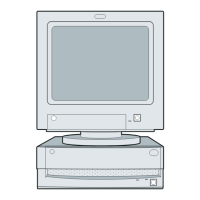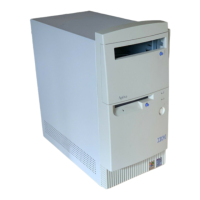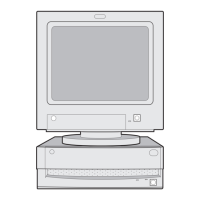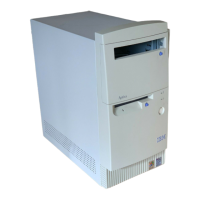96
Introduction
This section explains the diagnostic aids, power-on self test
(POST) and diagnostics program (PC-Doctor), that are
available for troubleshooting problems on the system.
Power-On Self Test
Each time you power-on the system, the power-on self test
(POST) is initiated. Several items are tested during POST,
but is for the most part transparent to the user.
POST checks the following:
• System Board • Mouse
• Memory • Parallel Port(s)
• SVGA Controller • Serial Port(s)
• Hard Disk Drive(s) • CD-ROM Drive(s)
• Floppy Diskette Drive(s) • Sound Controller
• Keyboard
To start POST, turn on the monitor and then the system unit.
The following will happen:
1. The IBM logo will appear on center of the screen.
2. At this time one of two hot-keys may be used. The F1
key, as described on screen, will cause the system Setup
Utility menu to appear. The F9 key will switch the
graphical IBM logo screen to the traditional text-based
system startup screen, which displays BIOS version and
system memory tested.
3. If an error is detected during POST, the IBM logo screen
will automatically switch to the text-based screen and
display the error message or code with a beep.
Depending on the criticality of the POST error, the system
may halt and/or display the message “Press F1 to go to
the Setup or Enter to continue”.
If this message appears, pressing the Enter key will allow
the system to attempt to proceed despite the reported
error; pressing F1 will cause the system Setup Utility
menu to appear.

